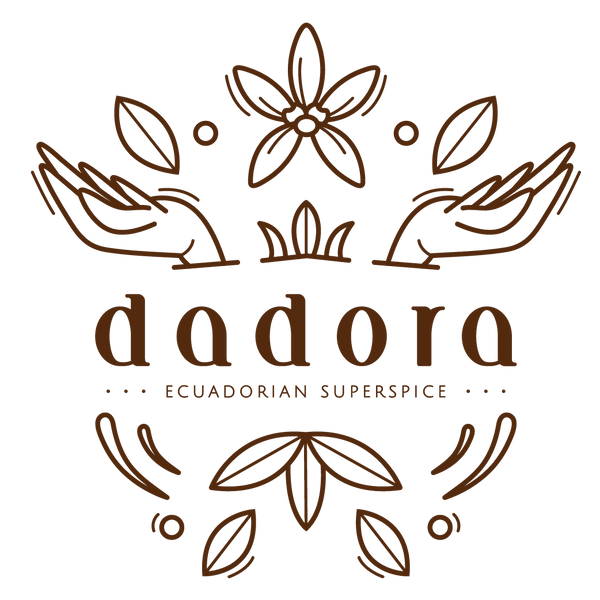The Vanilla That Smells Like Flowers
If you’ve ever opened a bottle of Tahitian vanilla extract or sliced into one of our Ecuadorian-grown vanilla beans, you know the scent — sweet, soft, and impossibly floral. But what gives Tahitian vanilla its perfume-like aroma and distinctive taste?
Let’s explore the science, the terroir, and the craftsmanship that make Vanilla tahitensis one of the most beloved — and misunderstood — vanillas in the world.
A Different Species with a Distinct Personality
Most of the world’s vanilla comes from Vanilla planifolia — the variety native to Mexico and cultivated heavily in Madagascar. Tahitian vanilla, on the other hand, comes from Vanilla tahitensis, a natural hybrid that developed centuries ago in the South Pacific.
Flavor: sweet, floral, and slightly fruity, with notes reminiscent of cherry, anise, and cacao.
Aroma: lighter and more aromatic than Madagascar vanilla — think blossoms rather than butter.
Texture: plumper, with higher oil content and lower vanillin concentration, which makes it ideal for delicate desserts and luxury extracts.
Because of its rarity and unique composition, Tahitian vanilla is often favored by pastry chefs, perfumers, and craft distillers who want complexity without heaviness.
Why Ecuador Is Perfect for Tahitian Vanilla
At Dadora Vanilla, our Vanilla tahitensis orchids thrive in Ecuador’s tropical lowlands, where the warm, humid air helps the pods develop their natural sweetness.
Once harvested, the beans travel to the Andean highlands, where they are sun-cured by hand in a cooler, drier environment. This process:
Intensifies the bean’s floral and fruity top notes
Locks in natural vanillin oils
Produces the deep aroma that distinguishes Dadora’s vanilla from mass-produced varieties
This two-region process — tropical growth and high-altitude curing — is what gives our vanilla its complexity and perfume-like finish.
The Chemistry of the Floral Aroma
Tahitian vanilla’s signature scent comes from its balance of p-hydroxybenzaldehyde, anisaldehyde, and heliotropin — aromatic compounds that smell like cherry blossoms, almond, and violets.
While Vanilla planifolia is dominated by vanillin, tahitensis offers a broader bouquet of these secondary compounds, which is why it smells more floral and tastes fruitier even with lower vanillin content.
It’s a different expression of vanilla — more graceful than bold, more perfume than spice.
How to Use Tahitian Vanilla in Your Kitchen
Tahitian vanilla shines in recipes where aroma matters as much as taste:
Ice cream & custards: adds floral depth without overpowering.
Whipped cream or frosting: a little powder or extract lifts everything.
Cocktails: pairs beautifully with rum, bourbon, or passion fruit.
Fragrance applications: even perfumers use it as a natural fixative.
Start with these Dadora favorites:
Dadora Pure Tahitian Vanilla Extract – Limited Edition, Gourmet Vanilla
Why It Matters: From Farm to Table, With Intention
Every bean we grow represents a hands-on process — from hand-pollination in Esmeraldas, Ecuador, to small-batch sun curing in the Andes.
We oversee every step of the process to ensure top-level quality and a truly farm-to-table product.
Our goal isn’t just to make vanilla — it’s to bring authenticity, sustainability, and craftsmanship back to an ingredient that has been over-industrialized for far too long.
Closing Thought
Tahitian vanilla’s floral magic isn’t an accident — it’s the result of genetics, climate, and care.
When grown and cured naturally, Vanilla tahitensis captures the very essence of the tropics: sweet, romantic, and unforgettable.
Taste it once, and you’ll understand why this rare vanilla has captured the hearts of chefs and makers worldwide.






